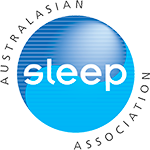-
Views
-
Cite
Cite
Bernd Feige, Svetoslava Nanovska, Chiara Baglioni, Benedict Bier, Laura Cabrera, Sarah Diemers, Maximilian Quellmalz, Markus Siegel, Ireni Xeni, Andras Szentkiralyi, John-Peter Doerr, Dieter Riemann, Insomnia—perchance a dream? Results from a NREM/REM sleep awakening study in good sleepers and patients with insomnia, Sleep, Volume 41, Issue 5, May 2018, zsy032, https://doi.org/10.1093/sleep/zsy032
Close - Share Icon Share
Abstract
Insomnia disorder (ID) is a frequent sleep disorder coupled with increased risks for somatic and mental illness. Although subjective complaints are severe, polysomnography (PSG) parameters show only modest differences between groups. Rapid eye movement (REM) sleep as the most aroused sleep state may be especially vulnerable to be perceived as wake. To directly assess possible differences, we determined auditory waking thresholds and sleep perception in patients with ID and healthy control participants (good sleeper controls [GSC]) in N2 and REM sleep.
In case–control study, 27 patients with ID and 27 age- and gender-matched controls were included. Four consecutive nights were assessed in the sleep laboratory, with nights 3 and 4 each containing three awakenings either from stable N2 or REM sleep. Awakening thresholds in patients with ID did not differ from GSC, but decreased over the course of the night. Patients with ID indicated significantly more frequently than GSC having been awake when woken from REM sleep but not from N2 and were less sure when indicating they had been asleep. Additionally, participants with ID rated their REM sleep mentation as more emotionally negative compared with GSC.
This study presents direct evidence that the subjective experience of insomnia might be specifically coupled to the REM sleep state. Assuming chronic hyperarousal as a central pathophysiologically relevant pathway for insomnia, this might become especially evident during REM sleep, thus reflecting a hybrid sleep state in insomnia being coupled with altered sleep perception.










Comments